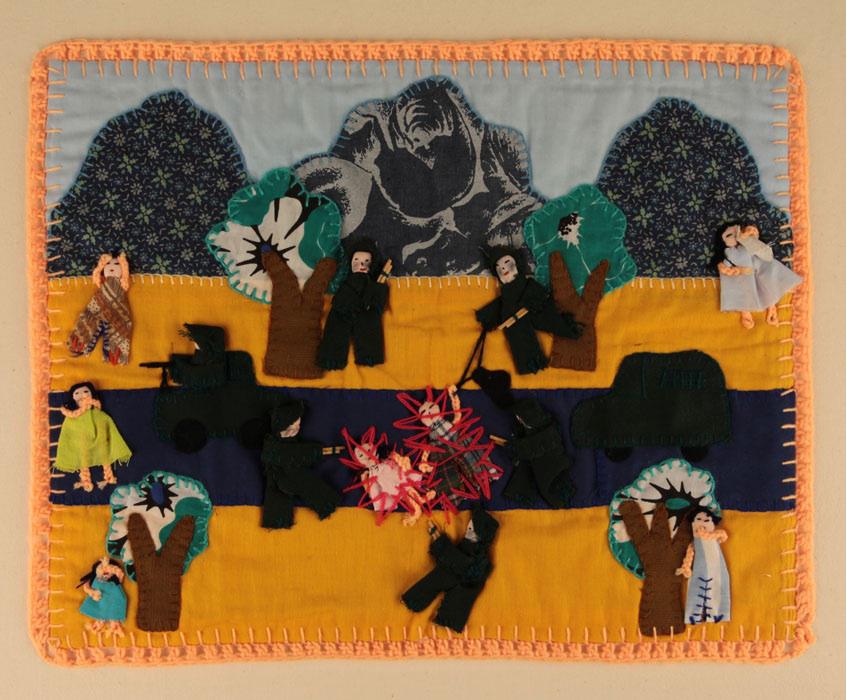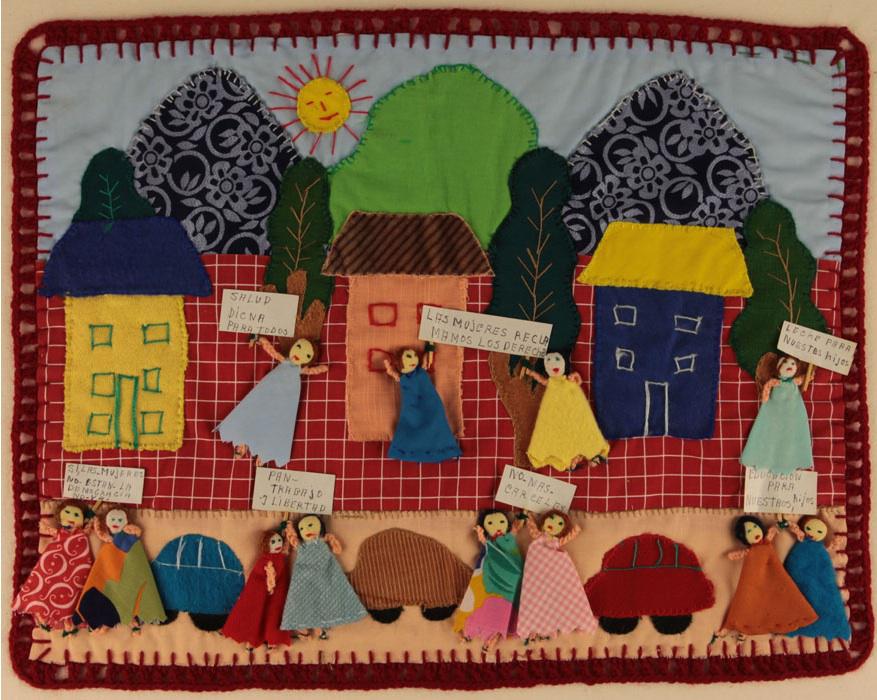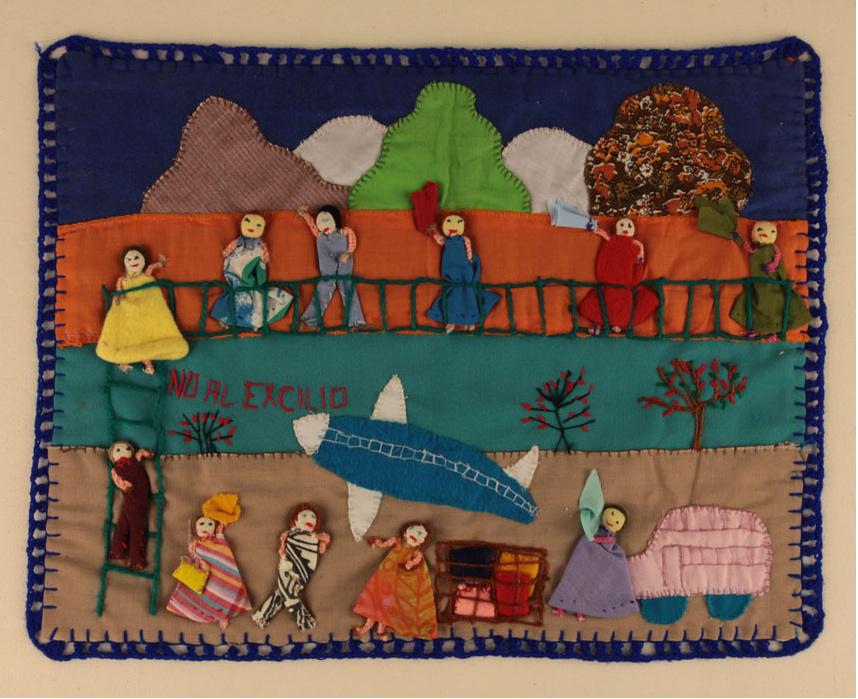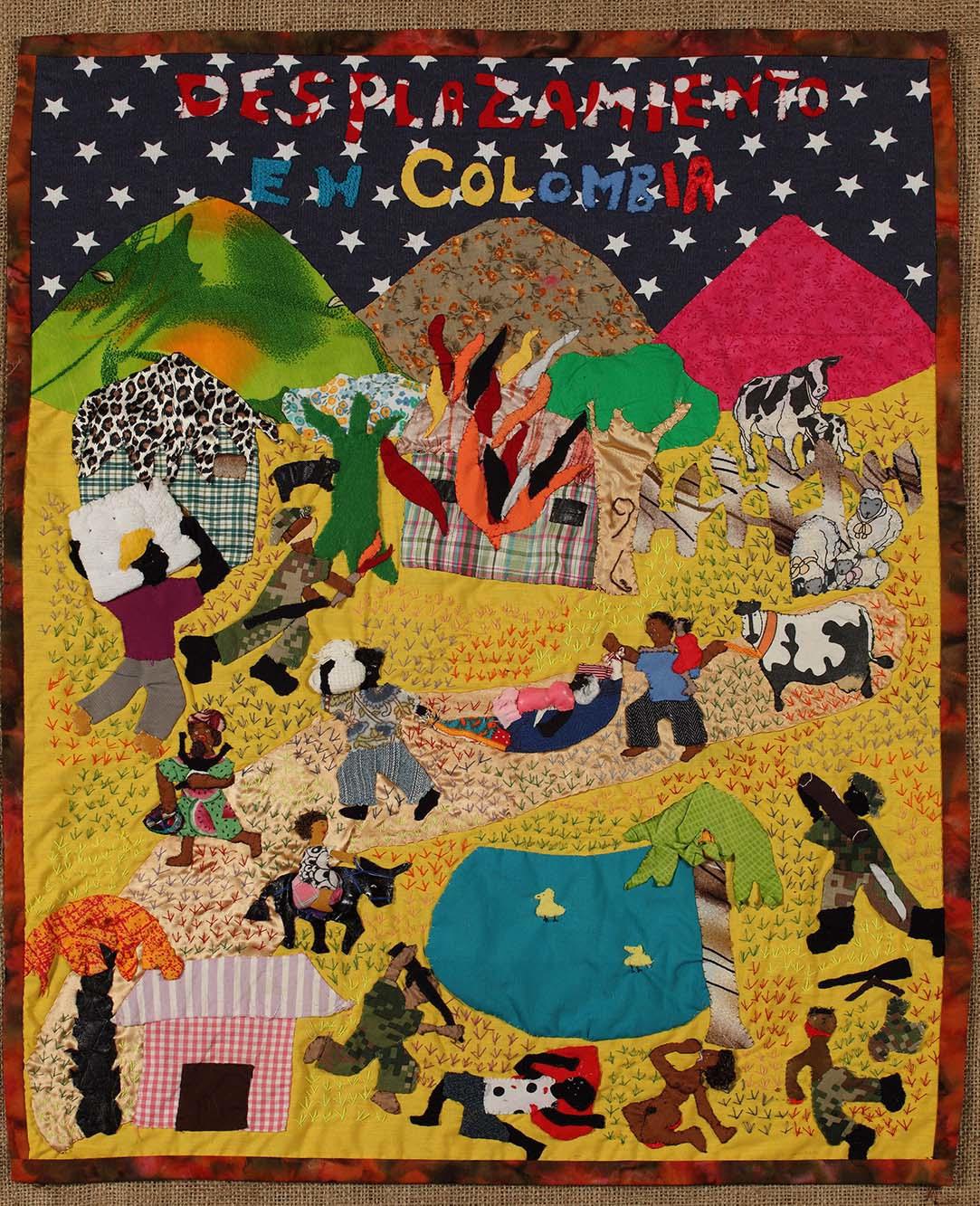The Vault is Slate’s history blog. Like us on Facebook, follow us on Twitter @slatevault, and find us on Tumblr. Find out more about what this space is all about here.
After General Augusto Pinochet came to power in Chile on September 11, 1973, via a coup d’etat, his military government executed, “disappeared,” or tortured thousands of citizens. The current exhibition at London’s Victoria & Albert Museum, “Disobedient Objects,” contains a few examples of arpilleras: narrative quilt squares sewn by Chilean women protesting the injustices of the regime.
Many of the people who disappeared under Pinochet’s rule were men, and their female family members were often left behind to suffer in economic insecurity. The arpilleras depicted not only the bloody side of the regime—those disappeared and tortured—but also the everyday privations and indignities of living in Pinochet’s Chile.
The Roman Catholic Church, an opponent of the regime, held workshops where women constructed these quilt squares, providing raw materials if needed. The church would sell the arpilleras overseas, and redistribute the proceeds to the women. Eventually, the government outlawed the ownership or display of arpilleras, but many still made it abroad.
The Royal Alberta Museum in Canada has an online exhibition about the arpillera movement. See more arpillera examples in this blog post by anthropologist and writer Margaret Snook.

Image courtesy of the Royal Alberta Museum.
The story of Carmen Gloria Quintana and Rodrigo Rojas, teenage protestors who were tortured and burned in 1986. Rojas died; Quintana, who suffered burns over 67 percent of her body, received reconstructive surgeries in Canada and then returned to Chile, where she became a symbol of resistance to the regime.

Image courtesy of the Royal Alberta Museum.
Neighborhood undergoing a random search, or allanamiento.

Image courtesy of the Royal Alberta Museum.
Women demonstrating, holding signs. Signs translated, from top left to right: “Salud digna para todos” (“Adequate health care for all”); “Las mujeres reclamamos los derechos” (“We women demand our rights”); “Leche para nuestros hijos” (“Milk for our children”). Bottom left to right: “Si los mujeres no estan, la democracia no va” (“If women are not here, democracy does not go anywhere”); “Pan, trabajo, y libertad” (“Bread, work, and liberty”); “No mas carceles” (“No more jails”); “Educacion para nuestros hijos” (“Education for our children”).

Image courtesy of the Royal Alberta Museum.
Women in a neighborhood banding together to buy staples at a lower price, in order to stretch their food money. These cooperatives were called “Comprando Juntos” (“Buying Together”).

Image courtesy of the Royal Alberta Museum.
Arpillera protesting the forced exile of loved ones—a common occurrence at the time.

Image courtesy of the Victoria & Albert Museum.
Colombian arpillera from the “Disobedient Objects” exhibition shows how the idea behind these quilts traveled beyond Chile’s borders in the years since Pinochet. This arpillera was a collaboration between fifteen women who lived through displacement after a paramilitary assault on the village of Mampujan, on March 11, 2000.